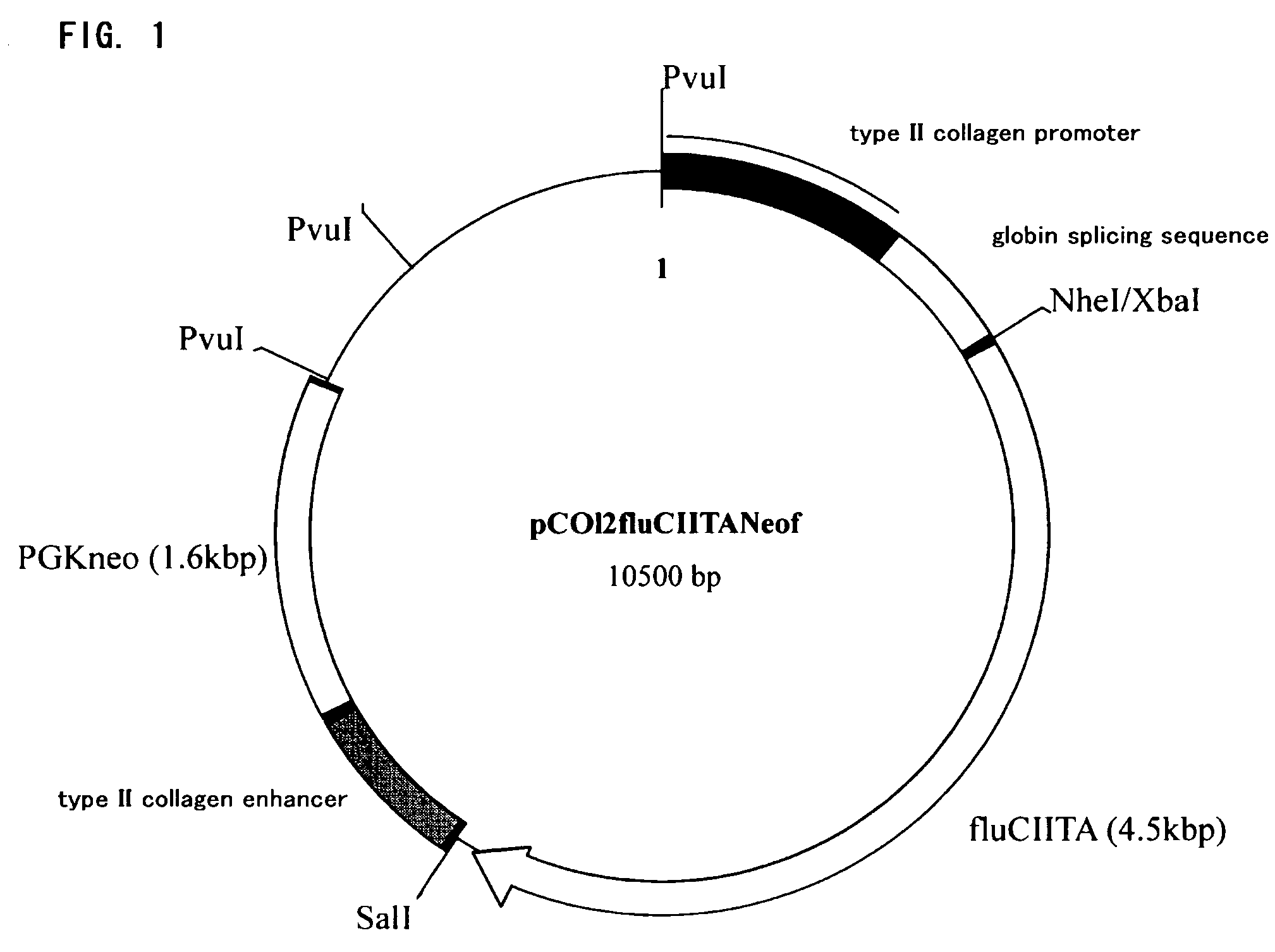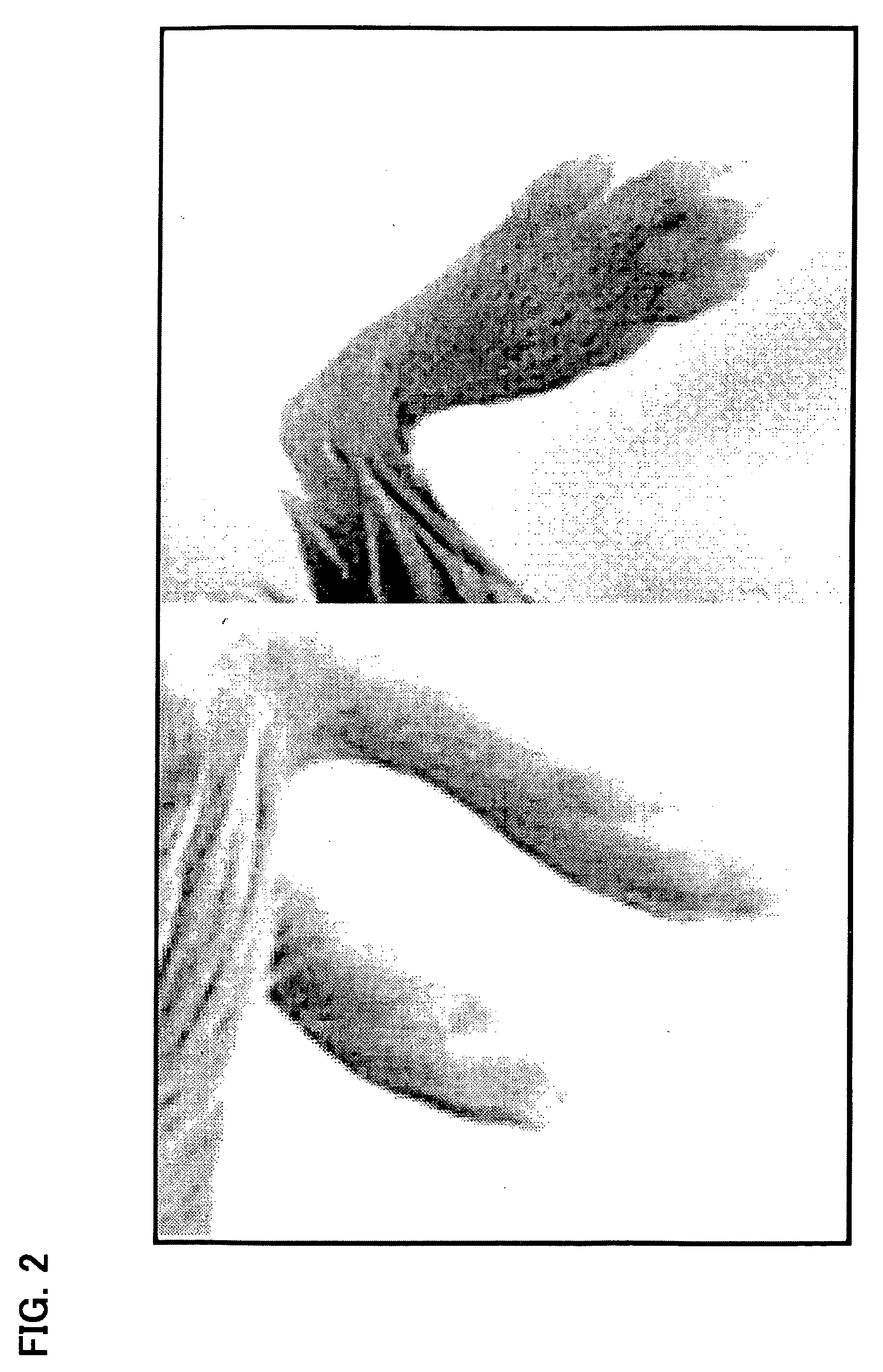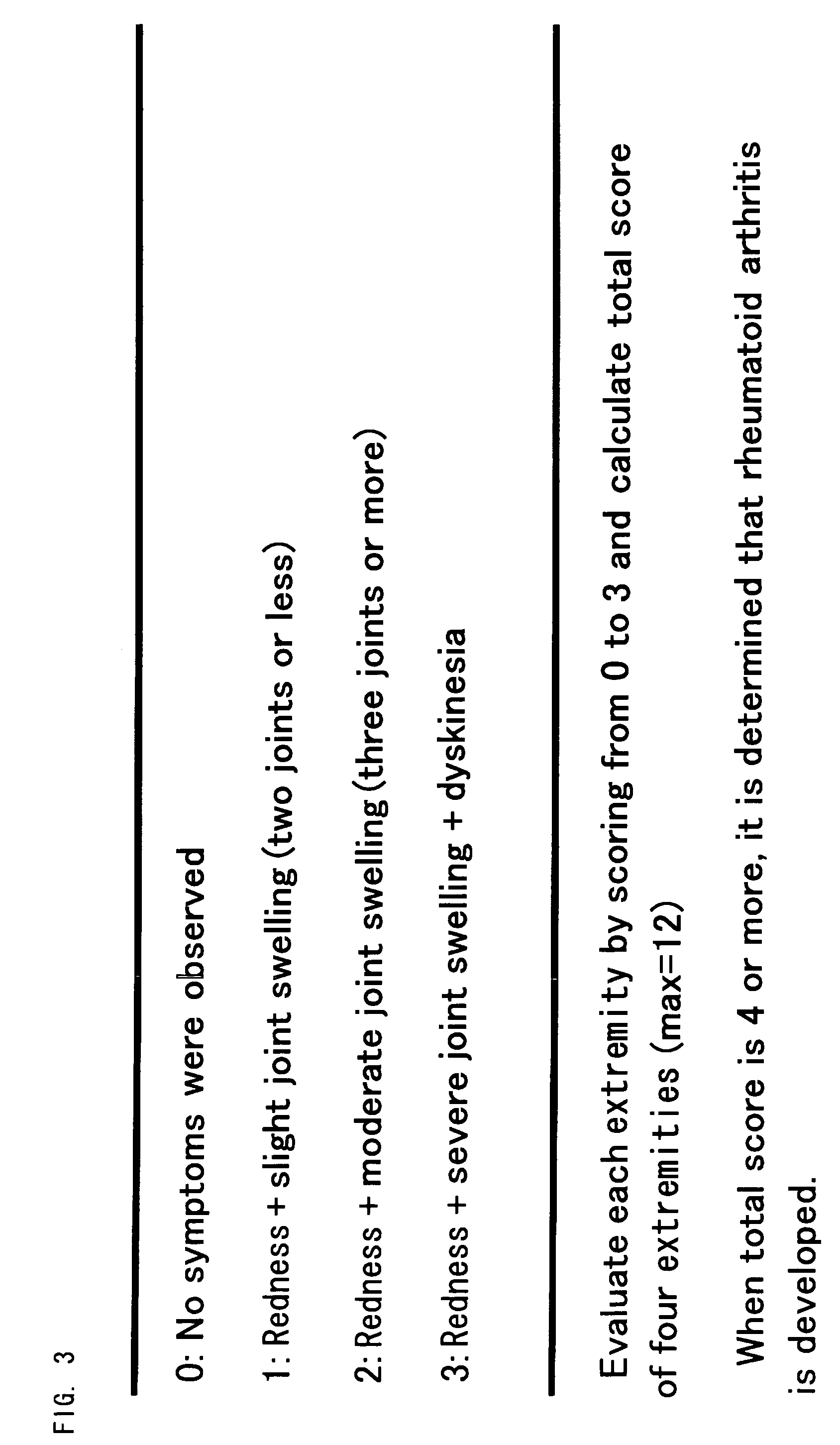Transgenic nonhuman mammal representing the pathologic conditions of human rheumatoid arthritis
a technology of human rheumatoid arthritis and nonhuman mammals, which is applied in the field of transgenic nonhuman mammals, can solve problems such as refractory complications, and achieve the effect of accurate observation of the inflammation process and high sensitivity
- Summary
- Abstract
- Description
- Claims
- Application Information
AI Technical Summary
Benefits of technology
Problems solved by technology
Method used
Image
Examples
example 1
Creation of Transgenic Mouse into which MHC Class II Transactivator Gene (CIITA Gene) is Introduced
[0134]As mentioned below, a transgenic mouse into which a CIITA gene was introduced was created according to Manipulating the mouse embryo, a laboratory manual, second edition, Brigid Hogan et al., Cold Spring Harbor Laboratory Press.
[0135]1. Preparation of Vector for Introducing Gene (Foreign DNA)
[0136]Vector pCol2fluCIITANeof (see FIG. 1), in which an MHC class II transactivator gene (CIITA gene) was located under the control of a type II collagen promoter, was constructed by the following procedures. This vector has the following characteristics: 1) A human globin splicing sequence is located downstream from about 1 kbp rat type II collagen promoter region. 2) Immediately downstream from this, human CIITA cDNA including a human CIITA poly A site is inserted. Following to this, a rat type II collagen enhancer is located. 3) Further downstream from this, a cassette is located immediat...
example 2
Induction Test of Rheumatoid Arthritis using Transgenic Mouse
[0151](1) Immunization Induction
[0152]The CIITA transgenic mouse produced in Example 1 was immunized according to the following procedures. Note here that mice being litters but having no transgene and mice having a DRB / 1j background were used as a wild type control 6-8 weeks old).
[0153]Firstly, as a primary immunization, 0.01 mg of type II collagen was administered to several sites by subcutaneous injection Note here that type II collagen (purity: 99%, produced by Collagen Gijutu Kensyu Kai) purified from cow articular cartilage, which was dissolved in 0.01M acetic acid and mixed with an equal amount of complete adjuvant (DIFCO), was used.
[0154]At the third week following the primary immunization, 0.01 mg of type II collagen was administered to several sites again by subcutaneous injection as a secondary immunization. For the secondary immunization, a mixture of type II collagen with incomplete adjuvant was used.
[0155]2. ...
PUM
| Property | Measurement | Unit |
|---|---|---|
| duration time | aaaaa | aaaaa |
| duration time | aaaaa | aaaaa |
| swelling | aaaaa | aaaaa |
Abstract
Description
Claims
Application Information
 Login to View More
Login to View More - R&D
- Intellectual Property
- Life Sciences
- Materials
- Tech Scout
- Unparalleled Data Quality
- Higher Quality Content
- 60% Fewer Hallucinations
Browse by: Latest US Patents, China's latest patents, Technical Efficacy Thesaurus, Application Domain, Technology Topic, Popular Technical Reports.
© 2025 PatSnap. All rights reserved.Legal|Privacy policy|Modern Slavery Act Transparency Statement|Sitemap|About US| Contact US: help@patsnap.com



